
Burnet (Sanguisorba): Planting, Growing and Care
Contents
Sanguisorbes in a nutshell
- Burnets or Sanguisorba offer striking, spike-like flowers in summer, ranging from short to elongated forms
- Their elegant blooms span from white to deep purple, with beautiful shades of pink and red in between
- These hardy perennials are long-lived, thriving in gardens for many years
- With their wildflower charm, burnets are perfect for naturalistic garden styles!
- The salad burnet, Sanguisorba minor, is both medicinal and edible!
Our Expert's Word
Also known as salad burnet, sanguisorba is a rhizomatous perennial plant that offers delicate summer blooms in ovoid or elongated spikes. These spikes can take on red, pink, purple or white hues. It also boasts attractive foliage with serrated leaflets. With its wildflower appearance, it’s ideal for naturalistic gardens and pairs beautifully with ornamental grasses. Few plants offer such lightness, like the short, crimson spikes of Sanguisorba officinalis ‘Tanna’. The burnet carries small pom-poms at the end of long, slender stems that seem to float in the air, dancing with the wind.
While the most well-known varieties are likely Sanguisorba officinalis and minor, burnets offer wonderful diversity: from the drooping pink spikes of Sanguisorba obtusa and Sanguisorba canadensis, to the pure white, skyward-pointing spikes of Sanguisorba canadensis, and the dark pink, upright spikes of Sanguisorba menziesii… the choice is vast, and the garden effect varies dramatically between varieties!
Easy to grow, sanguisorba is a relatively undemanding plant. It’s rarely affected by diseases but is vulnerable to slugs and snails. The salad burnet, Sanguisorba minor, tolerates drought well and can be planted in rock gardens, while most other varieties prefer moist soil. Burnets can naturalise readily! Moreover, salad burnet, Sanguisorba minor, is an excellent medicinal and edible plant. Its leaves can be eaten in salads and it was traditionally grown in kitchen gardens.
Botany
Botanical data
- Latin name Sanguisorba sp.
- Family Rosaceae
- Common name Burnet, Salad Burnet
- Flowering summer
- Height up to 2 metres
- Exposure sun or partial shade
- Soil type moist and well-drained, preferably calcareous
- Hardiness -15 to -25°C
Burnets are perennial plants originating from temperate regions of the Northern Hemisphere. Sanguisorba minor and Sanguisorba officinalis are found in France, but their ecology differs as the former grows in dry grasslands and limestone scree while Sanguisorba officinalis prefers damp locations. Other species commonly cultivated come from North America (Sanguisorba canadensis), Japan (Sanguisorba obtusa) or Alaska (Sanguisorba menziesii). Many species originate from northern Asia.
There are between 20 and 30 species of burnet. Etymologically, Sanguisorba comes from sanguis: blood, and sorbere: to absorb, as this plant has properties to stop bleeding and aid wound healing. The salad burnet, Sanguisorba minor, is sometimes classified in the Poterium genus and called Poterium sanguisorba (synonym). Burnet belongs to the rose family, Rosaceae. This family includes most cultivated fruit trees as well as many wild plants found in France: wood avens, agrimony, bramble, meadowsweet, dog rose…
Burnets form a clump of leaves above which slender, flexible flowering stems rise. They can reach up to 2 metres in height, as with Sanguisorba canadensis. Others are much smaller, like Sanguisorba minor, which grows between 30 and 60 cm tall. Burnet stems are knotty, branched, and sometimes take on a reddish hue.
Depending on the variety, burnets flower between May and September-October. The salad burnet is among the first to flower, from May-June, while other species and varieties are often slightly later. Sanguisorba tenuifolia var. purpurea flowers from August.
Burnets carry their flower spikes at the end of long, slender, flexible stems. The very airy structure of burnet allows the view to pass behind the stems, giving the impression that the spikes are suspended in mid-air. Burnet’s flowering stems are ideal for bouquets – don’t hesitate to use them for this purpose!
Burnet flowers are small and clustered in dense spikes. Generally, the flowers have no petals. It’s the sepals and stamens that are decorative. The sepals are often green, pink or red, and resemble petals (petaloid sepals). The flowers consist of four sepals, four stamens for male flowers and one style for female flowers.
The flower spikes can be white, pink, red or purple, sometimes with brownish or violet tones. White-flowered varieties are particularly elegant, and the flowering of Sanguisorba tenuifolia ‘Alba’ somewhat resembles grass flower spikes! As for Sanguisorba obtusa, it offers bright pink spikes, contrasting with the often softer colours of other varieties. Sometimes the flowering is dark and quite intense, as with burnet ‘Tanna’.
Spike length varies considerably. When long, they take on a “bottlebrush” appearance, while short, ovoid or spherical spikes resemble small pom-poms. In Sanguisorba minor, they measure only one centimetre in diameter, but can reach 20 centimetres in length in Sanguisorba canadensis. The spikes are often upright but can also be drooping.
Sanguisorba officinalis is the host plant for two butterflies: the Dusky Large Blue (Maculinea nausithous) and the Scarce Large Blue (Maculinea teleius). They are protected in France and need burnet to complete their life cycle. This plant is therefore ecologically important.
Depending on the species, burnets are pollinated by insects (entomophilous pollination) or by wind (anemophilous pollination).
Burnet has very decorative leaves, divided into toothed leaflets. They are alternate and can grow up to 30 cm long. They have an odd number of leaflets (they are imparipinnate): between seven and twenty-five, with a terminal leaflet. In Sanguisorba minor, the leaflets are small and rounded, while in most other species they are oblong or elliptical. Sanguisorba tenuifolia has beautiful foliage with very fine, elongated leaflets.
The leaves have a lovely soft green colour. They are sometimes bluish. There are also variegated varieties, like Sanguisorba ‘Little Angel’! The variety Sanguisorba menziesii ‘Dali Marble’ has foliage with a fine white border around the leaflets.
The leaves of Sanguisorba minor are edible, with a cucumber-like taste, and can safely be eaten in salads.
Burnets have rhizomes (underground stems growing horizontally), allowing them to spread.
After flowering, burnet produces small, dry, four-angled fruits. These are achenes: dry fruits that don’t open at maturity and contain a single seed.
The main varieties of Sanguisorba
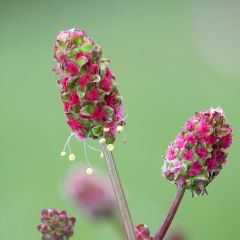
Sanguisorba minor
- Flowering time June, July
- Height at maturity 50 cm
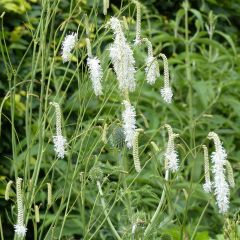
Sanguisorba tenuifolia Alba
- Flowering time August to October
- Height at maturity 1,50 m

Sanguisorba officinalis Pink Tanna
- Flowering time August, September
- Height at maturity 60 cm

Sanguisorba officinalis Tanna
- Flowering time August, September
- Height at maturity 40 cm
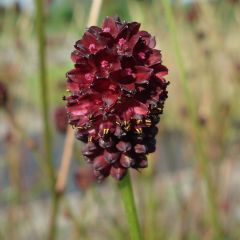
Sanguisorba officinalis Chocolate Tip
- Flowering time June, July
- Height at maturity 1 m
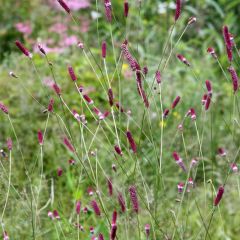
Sanguisorba menziesii
- Flowering time June, July
- Height at maturity 1 m
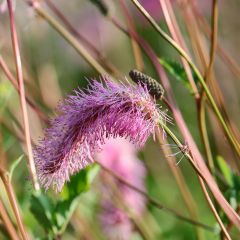
Sanguisorba obtusa
- Flowering time August to October
- Height at maturity 50 cm
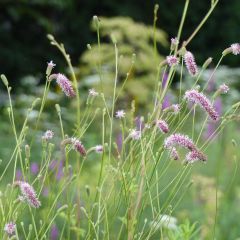
Sanguisorba tenuifolia var. purpurea
- Flowering time September, October
- Height at maturity 1,40 m
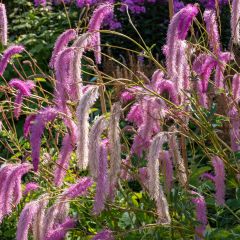
Sanguisorba hakusanensis
- Flowering time August to October
- Height at maturity 1,20 m
Discover other Sanguisorba
Planting
Where to plant?
Grow burnet in full sun or light shade. In northern France, prefer sunny spots so it can enjoy maximum light. In the south, a partially shaded position will suit it better.
Plant in well-drained soil. Sanguisorba minor prefers rather dry soils, while most other varieties (especially Sanguisorba officinalis) need soil that stays moist (particularly if you live in southern France!). In colder regions, avoid waterlogged soils in winter (you can plant on a mound or slope to improve water drainage). Don’t hesitate to add some gravel or pozzolan when planting to enhance drainage!
Burnets thrive in fertile, humus-rich soil, except for Sanguisorba minor, which tolerates poor, fairly dry soils. Burnets also prefer chalky substrates.
As it likes dry soils, Sanguisorba minor can be planted in rock gardens! Create a rocky bed alongside other drought-tolerant plants. You can also grow burnet in pots. Choose a fairly large container and add a drainage layer at the bottom.
When to plant?
Plant burnet in spring or autumn, avoiding periods of frost or extreme heat.
How to plant?
- Start by placing the root ball in a basin of water to moisten it and encourage establishment.
- Dig a planting hole. You can add some gravel or pozzolan to improve drainage, especially if growing Sanguisorba minor. Feel free to enrich the soil with well-rotted compost.
- Place your burnet in the planting hole.
- Backfill with soil around it, then firm down.
- Water generously.
You can add mulch to keep the soil cool and suppress weeds. Continue watering regularly during the first few weeks after planting.
→ Also discover how to grow burnet in pots!
Also check out our video guide – How to plant perennials?
Maintenance
We recommend staking the tallest varieties, especially if they are exposed to wind. The stems are slender, flexible and elongated: for a species like Sanguisorba canadensis, which can reach 2 metres, the plant might topple over at the slightest breeze. Place a few stakes around the clump and tie it with string. To avoid staking, you could also plant the burnet between other stiffer-stemmed plants that will provide support.
With the exception of Sanguisorba minor, which tolerates drought reasonably well, most burnets naturally grow in cool, even moist soils and therefore require regular watering. We suggest adding a thin layer of mulch around the base of your burnets, as this will help retain soil moisture.
You can deadhead the spent flower stems to prevent self-seeding and prolong flowering (as this encourages new blooms!). In early spring, cut back any dried stems and leaves for aesthetic reasons and to stimulate new growth. We advise dividing the clumps every few years to improve air circulation and control their spread, as burnets can sometimes expand via their rhizomes.
Burnet is rarely affected by diseases. The most common pests are slugs and snails, which may nibble young leaves. You can create a barrier around your plants using wood chips or ash.
Propagation
Sowing
You can sow burnet in spring or autumn. However, the seeds take a long time to germinate and develop, which is why we recommend dividing clumps instead.
- Prepare pots by filling them with compost. Water and gently firm down.
- Sow the seeds.
- Cover them with a thin layer of substrate.
- Place your seedlings under a cold frame.
- Ensure the substrate remains moist until germination.
- Once the young shoots are large enough, transplant them into individual pots.
Sanguisorba minor and Sanguisorba officinalis can be sown directly in the garden, preferably in early spring. Work the soil by removing the largest weeds and stones. Sow, then cover with a thin layer of compost and water. Continue to water regularly in the following weeks.
Dividing Clumps
Burnets have spreading rhizomes, allowing them to expand. You can propagate the plant by lifting them. We recommend dividing them every four to five years to aerate the clumps and rejuvenate them. Do this in early spring.
Identify a well-established clump and lift it from the ground using a garden fork. You can remove excess soil from around the roots. Separate the clump into several sections, using secateurs if needed. Replant in a new location, having prepared the ground beforehand. Water generously. Keep the substrate moist in the following weeks while the new plants establish.
Association
Its delicate flowering makes Burnet a perfect fit for naturalistic-style gardens. Paired with ornamental grasses like Calamagrostis, Stipa pennata, or Miscanthus, it will instantly create a charming countryside atmosphere. You could also opt for Pennisetum setaceum, whose red-purple hues will harmonise beautifully with burnets. Give your garden a meadow-like feel by combining salad burnet with other airy plants, such as Cirsium rivulare ‘Atropurpureum’, or the elegant flower heads of teasel, Dipsacus sylvestris. You could also incorporate the white umbels of Apiaceae, like Selinum wallichianum. These delicate inflorescences will appear to float above the flowerbed. For added colour, consider adding scabious, penstemons, and Verbena rigida. Along borders, this creates a striking contrast with a neatly trimmed lawn, giving your garden a vibrant, colourful touch!
Sanguisorba minor thrives in dry conditions… It’s ideal for rock gardens! Plant it among stones alongside Armeria maritima, eryngiums, and clumps of ornamental grasses. This planting scheme requires minimal maintenance.
Use burnet to create a colourful flowerbed! Pair it with salvias, agastaches, heleniums, or daylilies. Opt for pink-flowered varieties like Sanguisorba obtusa, or darker-flowering types (such as Sanguisorba officinalis ‘Tanna’) to intensify the display. The contrast between burnet’s delicate blooms and the bold, colourful flowers of daylilies creates a stunning effect!
Experiment with colour by combining burnets with other red-purple plants like Astrantia ‘Ruby Star’, penstemons, Cosmos atrosanguineus, or Centranthus ruber. Introduce white blooms for contrast. Alternatively, design a soft pink-and-white scheme by pairing Sanguisorba obtusa or S. hakusanensis with Japanese anemones and bleeding hearts (Dicentra spectabilis). Other pastel-toned flowers will enhance the romantic feel—consider adding bellflowers like Campanula lactiflora and baby’s breath (Gypsophila paniculata)!
Highlight burnet’s delicate blooms by playing with movement! Create a planting scheme that sways in the breeze by combining Sanguisorba tenuifolia ‘Alba’ with grasses like Stipa pennata, Pennisetum, or Briza media. Opt for ethereal flowers like baby’s breath, and stick to a palette of white, cream, and brown for a timeless effect. Your garden will exude softness—like a gentle caress or a floating feather…
Burnets also thrive near ponds (except Sanguisorba minor, which prefers drier soil). Pair them with ferns (e.g., Osmunda, Matteuccia), Myosotis palustris, sedges (Carex), meadowsweet (Filipendula ulmaria), or Asiatic primroses for a lush, refreshing retreat!
Did you know?
- Salad Burnet: An Edible and Medicinal Plant!
Salad burnet, Sanguisorba minor, has medicinal properties, particularly antiseptic and haemostatic (it stops bleeding). It can be used as an infusion to treat sunburn. The leaves are edible: they have a cucumber-like flavour and are rich in vitamin C. You can use them to flavour sauces, salads and various dishes. Salad burnet was once commonly grown in kitchen gardens.
Useful resources
- Discover our range of sanguisorba!
- Our video advice – How to plant perennials?
- Get inspired by this naturalistic style to combine sanguisorbas in your garden!
Frequently asked questions
-
The leaves of my burnets are being nibbled!
The culprits are slugs and snails, which tend to eat the young leaves. You can protect your plants by spreading ash or wood chips all around them to stop these pests.
- Subscribe!
- Contents



































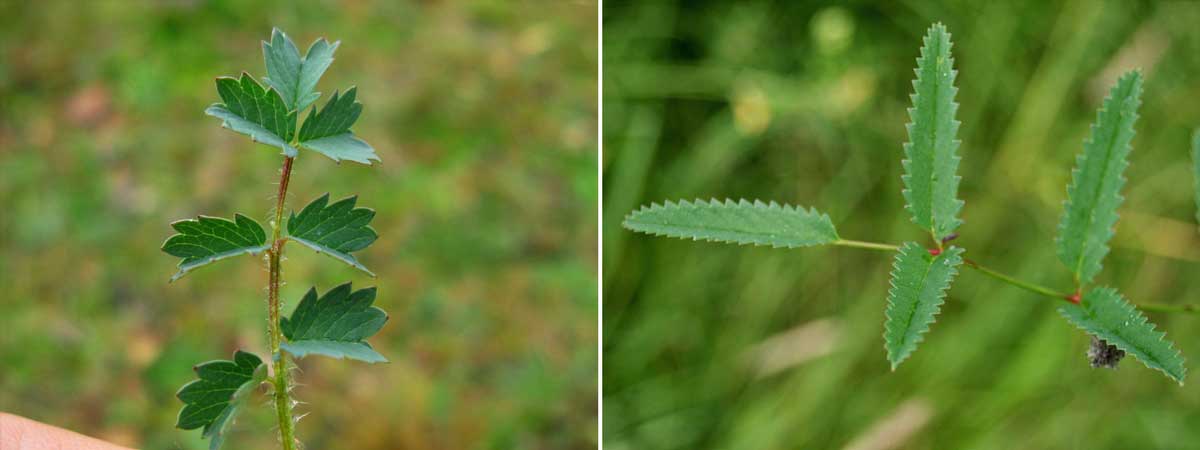
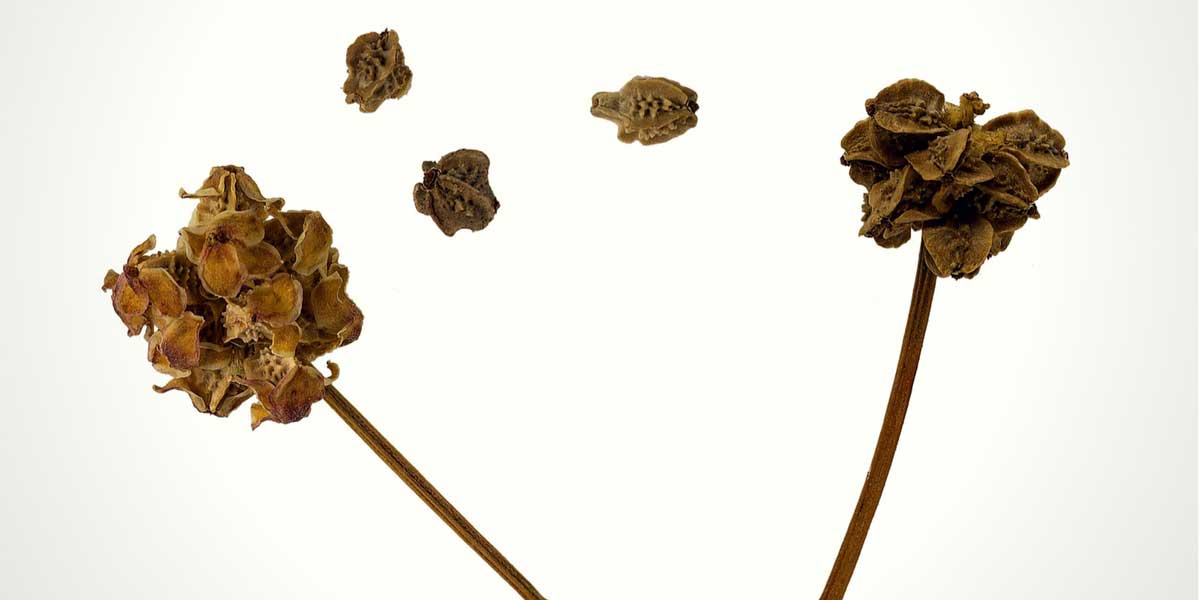
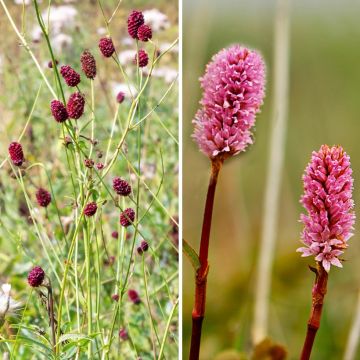





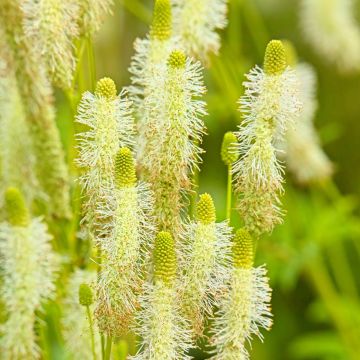

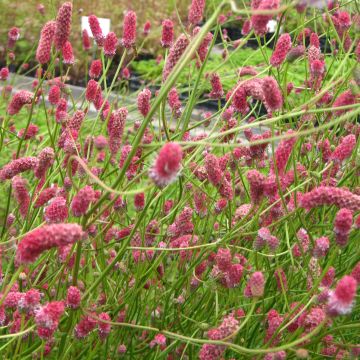
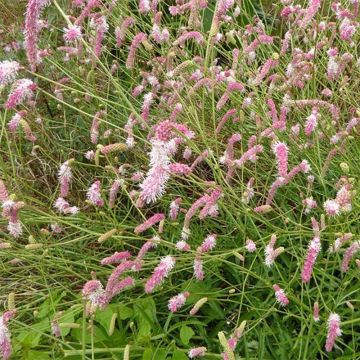
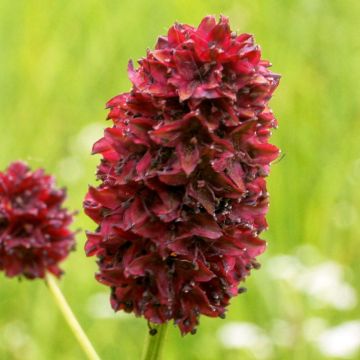
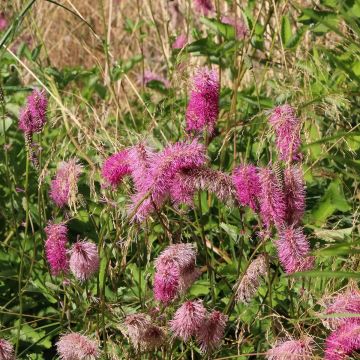
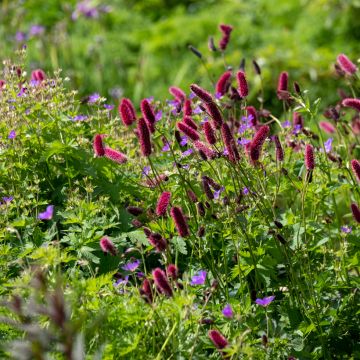
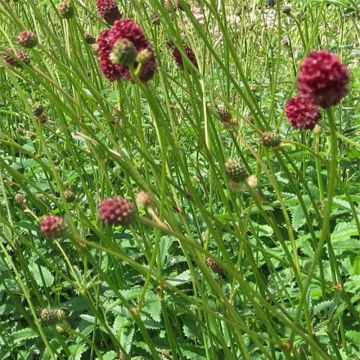

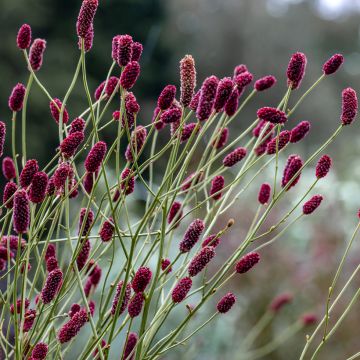
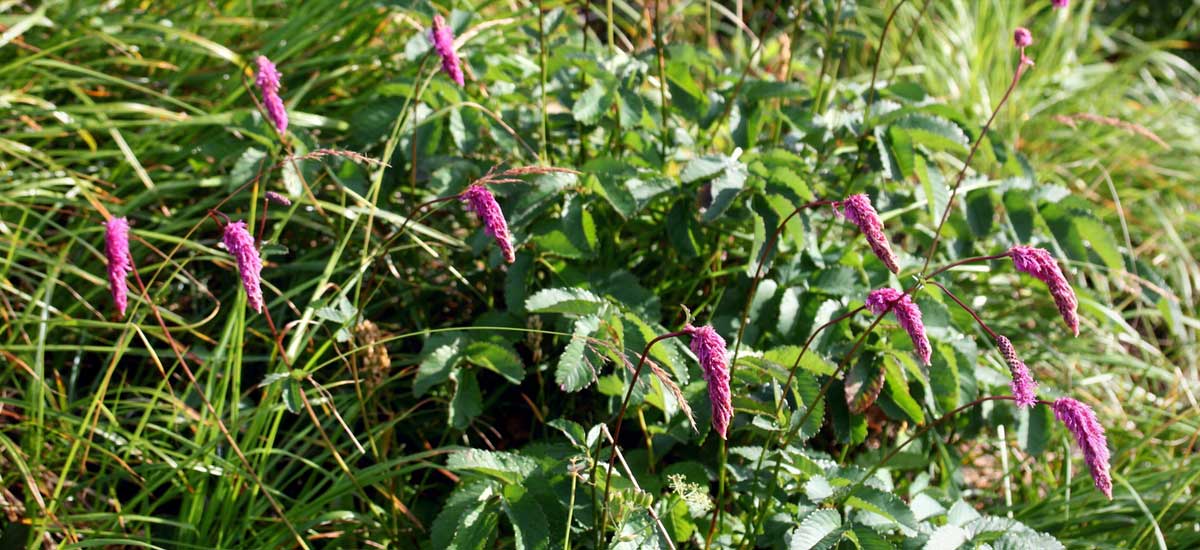
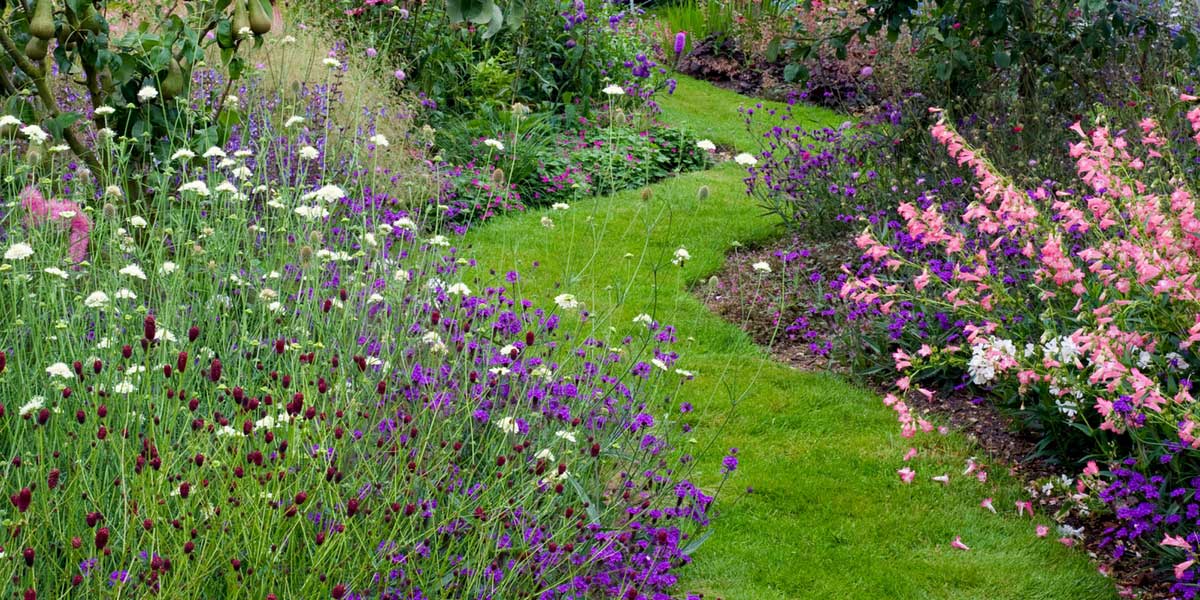
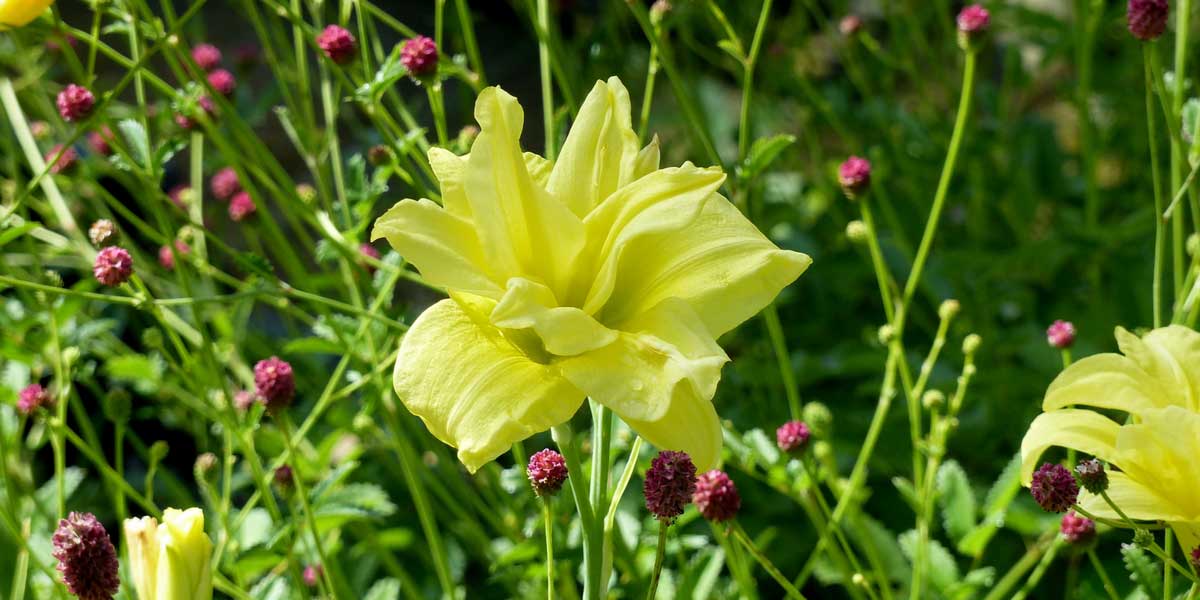
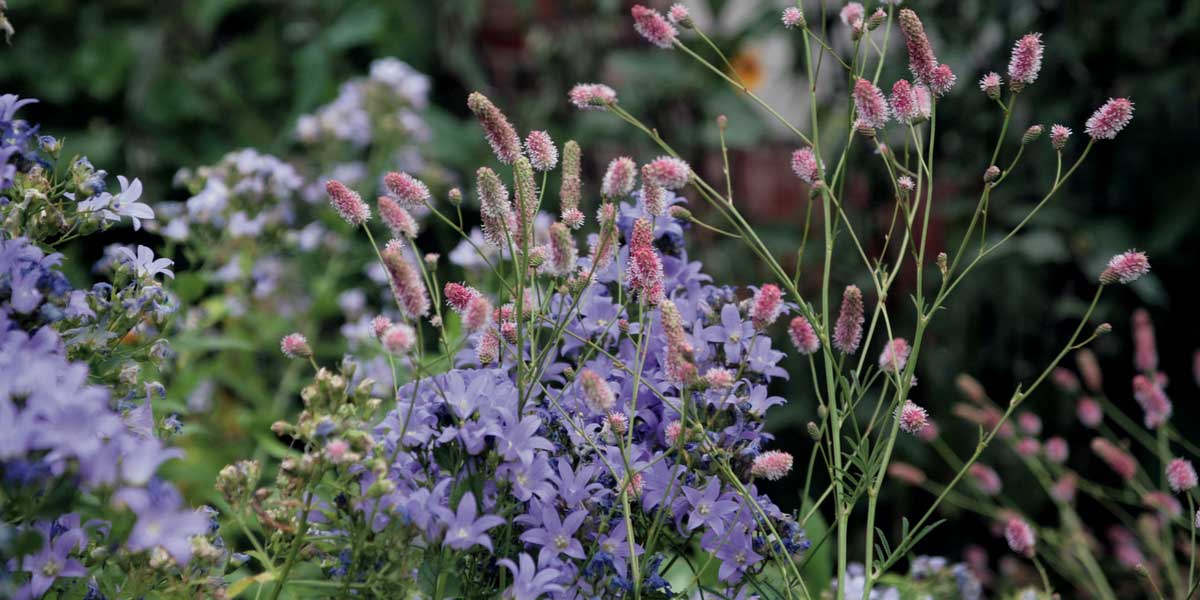
Comments